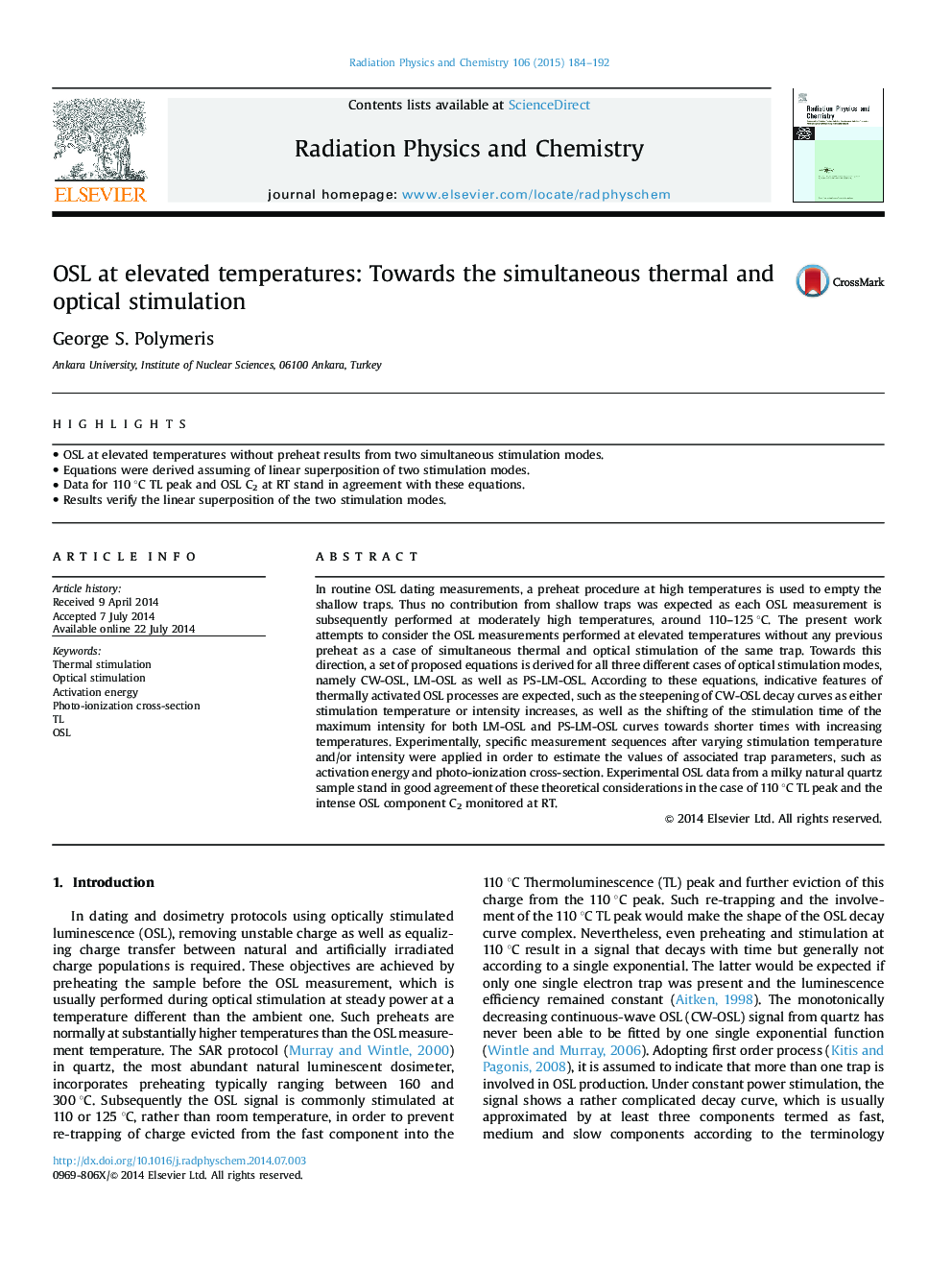| Article ID | Journal | Published Year | Pages | File Type |
|---|---|---|---|---|
| 1885964 | Radiation Physics and Chemistry | 2015 | 9 Pages |
Abstract
In routine OSL dating measurements, a preheat procedure at high temperatures is used to empty the shallow traps. Thus no contribution from shallow traps was expected as each OSL measurement is subsequently performed at moderately high temperatures, around 110-125 °C. The present work attempts to consider the OSL measurements performed at elevated temperatures without any previous preheat as a case of simultaneous thermal and optical stimulation of the same trap. Towards this direction, a set of proposed equations is derived for all three different cases of optical stimulation modes, namely CW-OSL, LM-OSL as well as PS-LM-OSL. According to these equations, indicative features of thermally activated OSL processes are expected, such as the steepening of CW-OSL decay curves as either stimulation temperature or intensity increases, as well as the shifting of the stimulation time of the maximum intensity for both LM-OSL and PS-LM-OSL curves towards shorter times with increasing temperatures. Experimentally, specific measurement sequences after varying stimulation temperature and/or intensity were applied in order to estimate the values of associated trap parameters, such as activation energy and photo-ionization cross-section. Experimental OSL data from a milky natural quartz sample stand in good agreement of these theoretical considerations in the case of 110 °C TL peak and the intense OSL component C2 monitored at RT.
Related Topics
Physical Sciences and Engineering
Physics and Astronomy
Radiation
Authors
George S. Polymeris,
